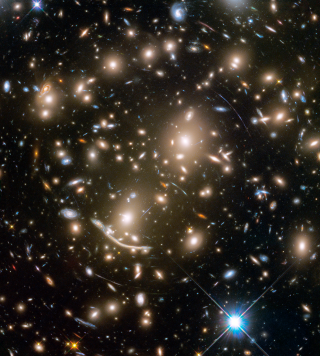Bibcode
Zarattini, S.; Aguerri, J. A. L.; Tarrío, P.; Corsini, E. M.
Referencia bibliográfica
Astronomy and Astrophysics
Fecha de publicación:
8
2023
Revista
Número de citas
6
Número de citas referidas
6
Descripción
Aims: In this work we study the large-scale structure around a sample of non-fossil systems and compare the results with earlier findings for a sample of genuine fossil systems selected using their magnitude gap.
Methods: We computed the distance from each system to the closest filament and intersection as obtained from a catalogue of galaxies in the redshift range 0.05 ≤ z ≤ 0.7. We then estimated the average distances and the distributions of cumulative distances to filaments and intersections for different magnitude-gap bins.
Results: We find that the average distance to filaments is (3.0 ± 0.8) R200 for fossil systems, whereas it is (1.1 ± 0.1) R200 for non-fossil systems. Similarly, the average distance to intersections is larger in fossil than in non-fossil systems, with values of (16.3 ± 3.2) and (8.9 ± 1.1) R200, respectively. Moreover, the cumulative distributions of distances to intersections are statistically different for fossil and non-fossil systems.
Conclusions: Fossil systems selected using the magnitude gap appear to be, on average, more isolated from the cosmic web than non-fossil systems. No dependence is found on the magnitude gap (i.e. non-fossil systems behave in a similar manner independently of their magnitude gap, and only fossils are found at larger average distances from the cosmic web). This result supports a formation scenario for fossil systems in which the lack of infalling galaxies from the cosmic web, due to their peculiar position, favours the growing of the magnitude gap via the merging of all the massive satellites with the central galaxy. Comparison with numerical simulations suggests that fossil systems selected using the magnitude gap are not old fossils of the ancient Universe, but rather systems located in regions of the cosmic web not influenced by the presence of intersections.
Proyectos relacionados

Evolución de Galaxias en Cúmulos
Las estructuras en el Universo, a todas las escalas de masa, se han formado de una forma jerárquica y principalmente producidas por fusiones de galaxias. Sin embargo, esta formación jerárquica de las galaxias está modulada por el entorno en el cual se crean y evolucionan. Mientras que las galaxias de campo presentan una evolución pasiva, los
Jairo
Méndez Abreu